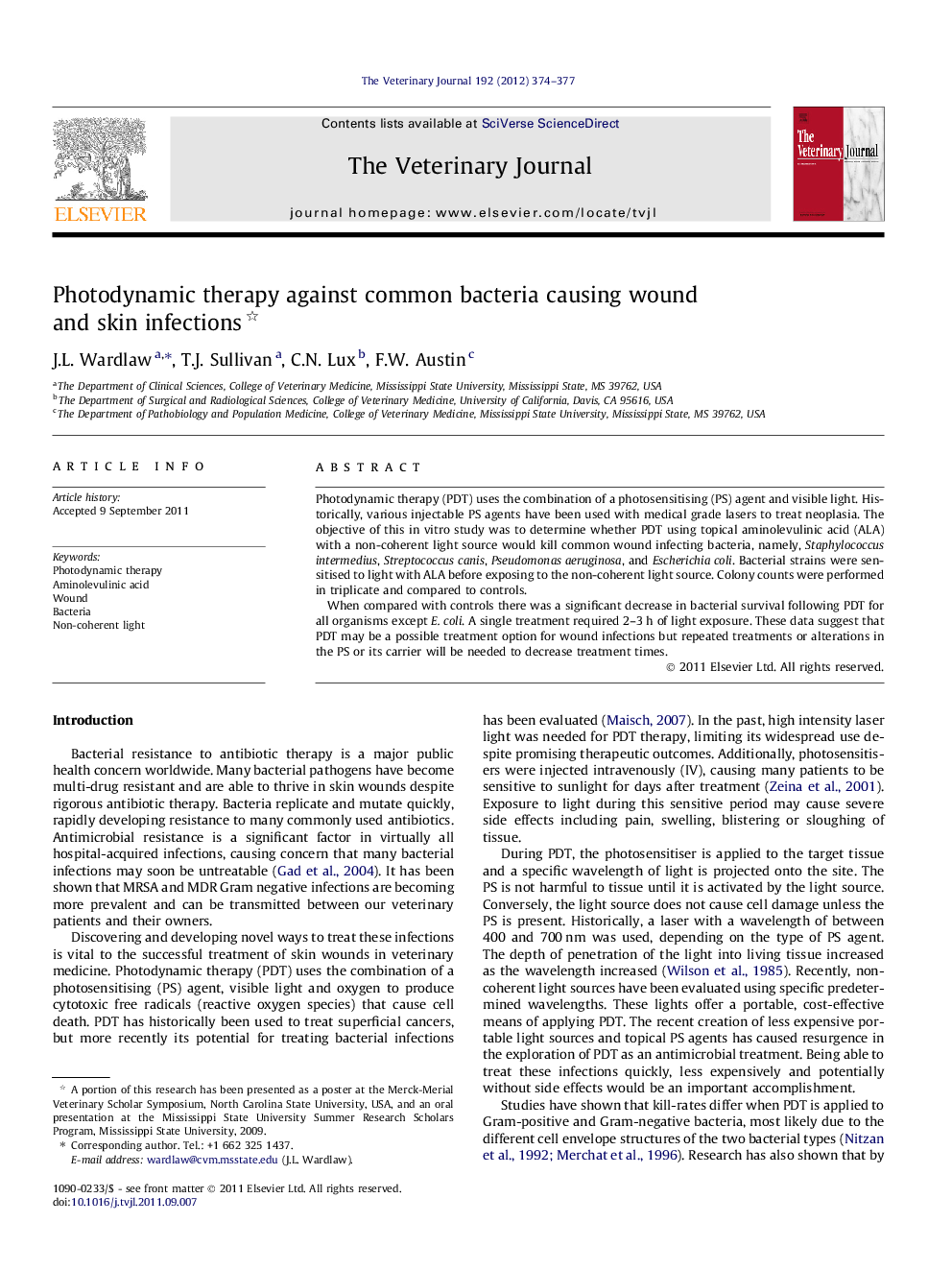| Article ID | Journal | Published Year | Pages | File Type |
|---|---|---|---|---|
| 5799364 | The Veterinary Journal | 2012 | 4 Pages |
Photodynamic therapy (PDT) uses the combination of a photosensitising (PS) agent and visible light. Historically, various injectable PS agents have been used with medical grade lasers to treat neoplasia. The objective of this in vitro study was to determine whether PDT using topical aminolevulinic acid (ALA) with a non-coherent light source would kill common wound infecting bacteria, namely, Staphylococcus intermedius, Streptococcus canis, Pseudomonas aeruginosa, and Escherichia coli. Bacterial strains were sensitised to light with ALA before exposing to the non-coherent light source. Colony counts were performed in triplicate and compared to controls.When compared with controls there was a significant decrease in bacterial survival following PDT for all organisms except E. coli. A single treatment required 2-3Â h of light exposure. These data suggest that PDT may be a possible treatment option for wound infections but repeated treatments or alterations in the PS or its carrier will be needed to decrease treatment times.
